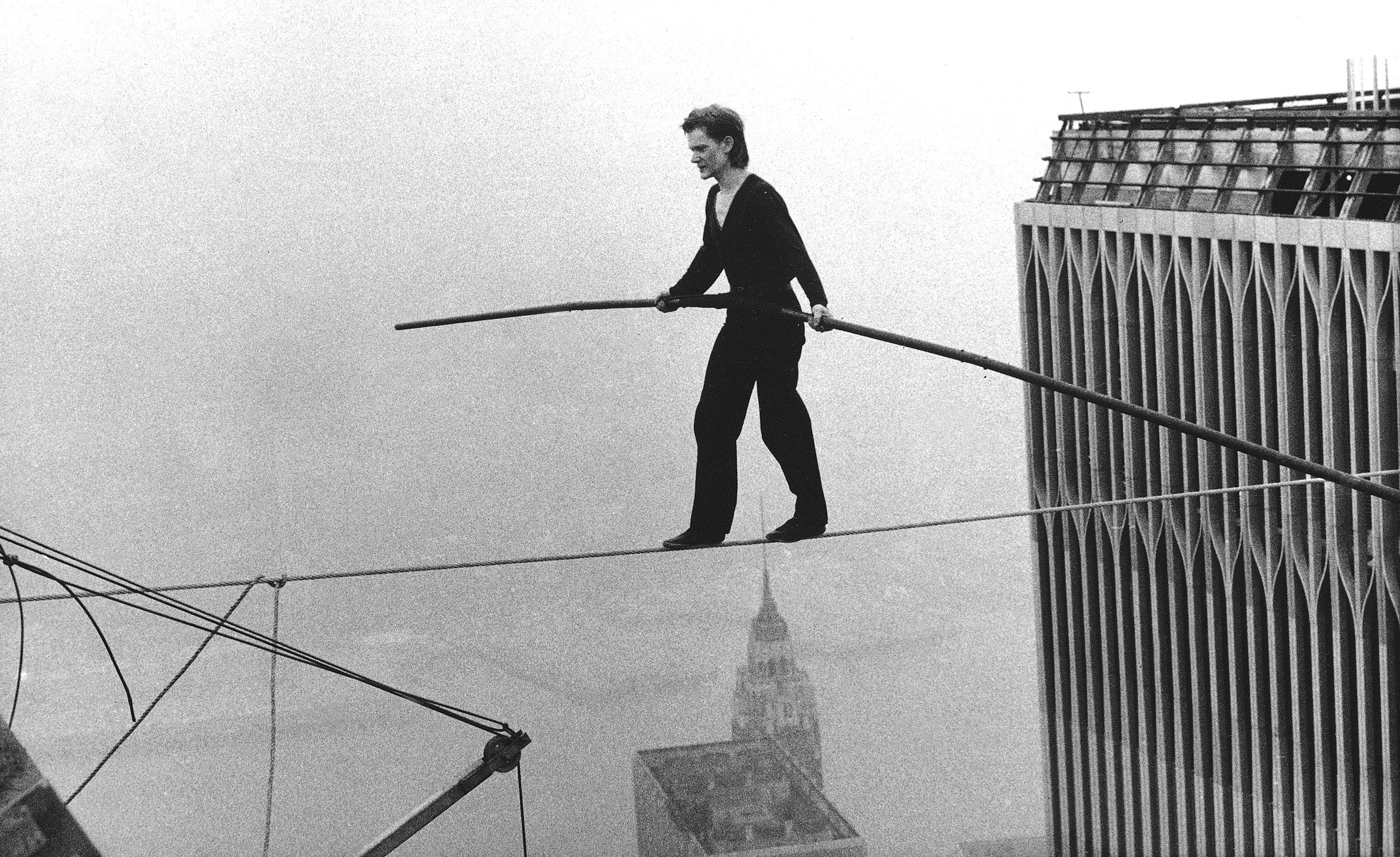High above the early-morning traffic in Lower Manhattan, a French street performer steps off the roof of the south tower of the World Trade Center on August 7, 1974. Clad in black and carrying a long pole for balance, Philippe Petit begins the most famous high-wire walk in history, calmly traversing the space between the Twin Towers at a height of 1,350 feet.
Petit enjoyed tightrope walking from a young age, and began his career as a juggler on the streets of Paris. Amazingly, he first imagined himself walking between the Twin Towers before they had even been built. As he later recounted, the idea came to him because of a dental emergency: “Here I am, young, 17-years-old, with a bad tooth in one of those un-colorful waiting room of a French dentist … suddenly, I freeze because I have opened a newspaper at a page and I see something magnificent, something that inspires me. I see two towers and the article says one day those towers will be built.”
The towers would be not open until 1973, but Petit was determined he would one day walk between them. He began his high-wire career with walks between the towers of Notre Dame in 1971 and the pylons of the Sydney Harbour Bridge in 1973. Although he trained with a circus performer and thought of himself as a “poet, conquering beautiful stages,” his preparations to walk between the Twin Towers most closely resembled scenes from a heist film. He disguised himself as everything from a construction worker to a journalist to an architect in order to gain access and study the site, even casing it from above via helicopter and identifying Barry Greenhouse, a man who worked on the 82nd floor of the south tower, as his inside man.
On the night of August 6, 1974, with Greenhouse’s help, Petit and some accomplices made their way into the towers, split into two teams. One of them shot an arrow across the gap between the buildings, spanning it with a length of fishing line that was then used to string stronger support wires. Around 7 a.m. the next morning, Petit stepped out onto the wire. Over the next 50 minutes, he completed eight trips across the divide, bowing to the onlookers below and even stopping to sit and lie down on the inch-thick wire. Finally, he dismounted and surrendered to the police, who arrested him and took him in for psychological evaluation.
Petit was charged with criminal trespassing and disorderly conduct, but the charges were dropped on the condition that he perform for the public in Central Park, which he happily did. Petit went on to perform a similar walk at the Lincoln Center and become the artist-in-residence at the Cathedral of St. John the Divine on the Upper West Side. He insisted that his famous walk, which was documented in the film Man on Wire and dramatized in another film, The Walk, was not an artistic statement so much as a natural outgrowth of his attitude toward life: “I see three oranges, and I have to juggle. I see two towers, and I have to walk.”

